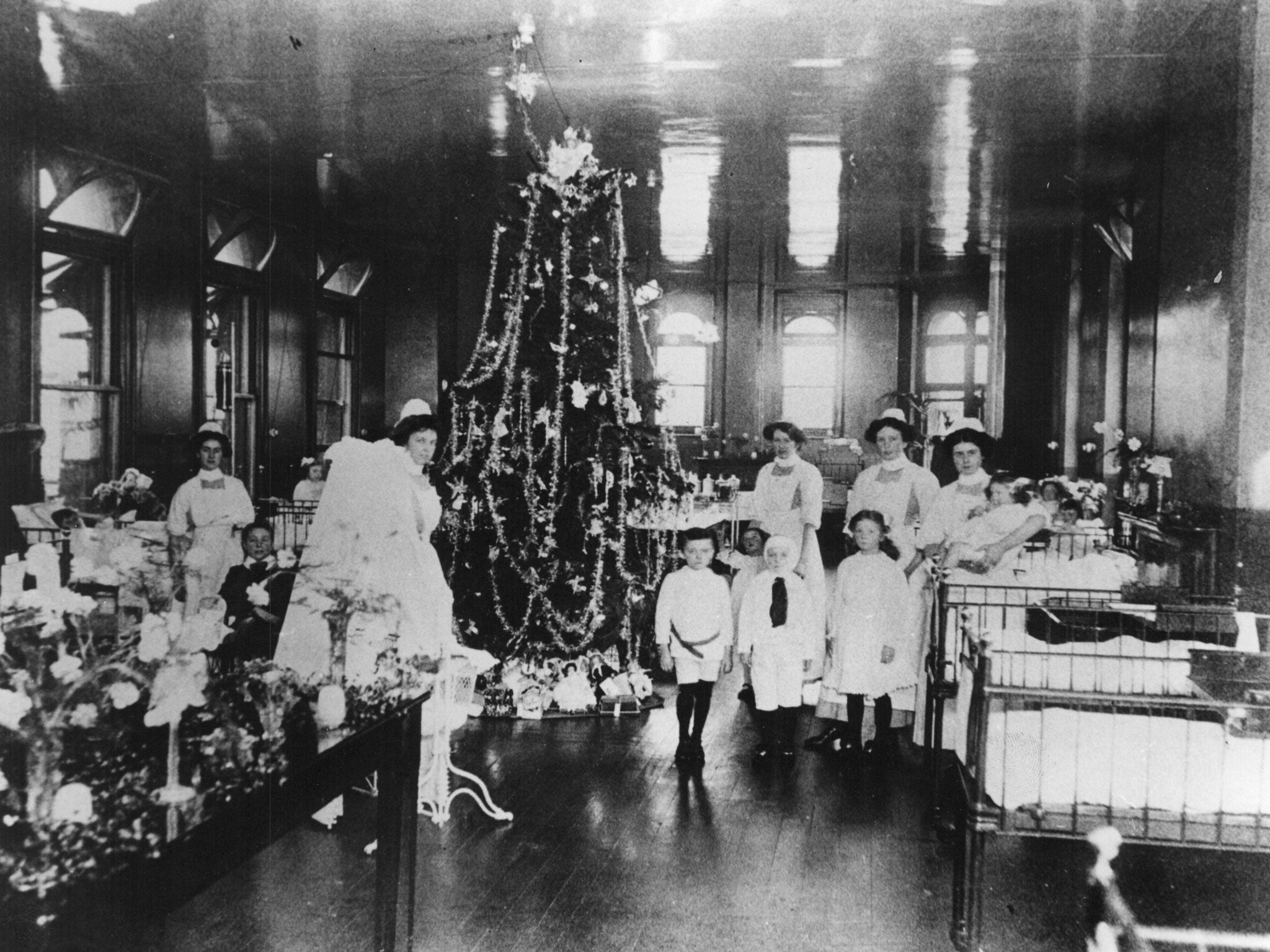Great Ormond Street Hospital's history revealed in photography archive that stretches back 150 years
Rachael Pells gains exclusive access to the photographs that helped Great Ormond Street expand from a 10-bed hospital for sick children into a world-leading medical-research establishment

Your support helps us to tell the story
From reproductive rights to climate change to Big Tech, The Independent is on the ground when the story is developing. Whether it's investigating the financials of Elon Musk's pro-Trump PAC or producing our latest documentary, 'The A Word', which shines a light on the American women fighting for reproductive rights, we know how important it is to parse out the facts from the messaging.
At such a critical moment in US history, we need reporters on the ground. Your donation allows us to keep sending journalists to speak to both sides of the story.
The Independent is trusted by Americans across the entire political spectrum. And unlike many other quality news outlets, we choose not to lock Americans out of our reporting and analysis with paywalls. We believe quality journalism should be available to everyone, paid for by those who can afford it.
Your support makes all the difference.When Great Ormond Street Hospital opened its doors in February 1852, it did so with a clear mission - to treat sick children, research their diseases and develop children's nursing. Yet it was limited by having just 10 beds.
So when, within a few months, it had 143 inpatients and 1,250 outpatients, its founders were in no doubt of a desperate need to find new sources of funding that would add to existing donations. Articles and engravings depicting the hospital were soon promoting its work in the national press; and, before the decade was out, photography, then still a novel medium, had been added to the mix, tugging at the hearts (and pursestrings) of Victorian philanthropists.
Today, more than 4,000 photographs documenting the hospital's history have been collated in the GOSH annals - many of which, according to archivist Nick Baldwin, who has worked at the hospital for more than 25 years, were likely to have been taken for fundraising literature or to feature in newspapers - as he says, “It was a sure way to reach rich individuals.”
One such image, “Lady Folkestone Cot, 1880s” shows a child in a bed with the name of the viscountess who sponsored her cot. The idea of cot sponsorship had begun just over a decade earlier, in 1868, explains Baldwin, “with one called the Aunt Judy Cot, Aunt Judy being the title of a children's magazine at the time”.
Through publicity, the magazine raised around £1,000 - enough to fund a cot on the girls' ward. The magazine's title appeared on an ornamental nameplate on the bed, which aroused the interest of its rivals and prompted them to want to do the same.
Soon, the idea of sponsorship appealed not only to businesses, but to individuals such as Lady Folkestone and celebrities. By the beginning of the 20th century, the hospital had more sponsors than beds, and the popularity of the initiative continued: Lewis Carroll and Enid Blyton each joined in, as did Winston Churchill in the 1950s. These endowments provided a significant proportion of the charity's income and continued until the early years of the NHS, in the wake of the Second World War.
Photography was also used to demonstrate the hospital's use of innovative equipment: one image details an early X-ray room; the electrical department, which had been established in 1903, used the new technology to produce revolutionary internal body scans.
Further photographs featured clinicians who were significant to the hospital's development. “Mr John Wycliffe Peck [featured in photographs of the electrical department] first came in as a 20-year-old locum in 1894 and stayed for more than 40 years,” reveals Baldwin. “He rather exceeded his job description and went on to set up the first radiography department.”
Another picture shows two children in protective eyewear in front of an ultraviolet screen. This photo was used in the 1930s to encourage donations to the hospital's redevelopment,” says Baldwin. “It demonstrates the hospital's use of recently developed equipment to treat rickets and vitamin deficiencies.
”Images such as the balcony scene would have been used to show that the buildings were becoming antiquated and in need of replacement,“ adds Baldwin. ”The idea was to encourage people to donate towards maintenance, which was a constant concern.“
Half a century on, a further need to refurbish the hospital's Victorian buildings resulted in the biggest and most successful fundraising venture of its kind: the Wishing Well Appeal, which ran from 1986 to 1987, raised £54m to fund the main clinical site, the Variety Club Building.
Today, GOSH continues to rely on donations to maintain its status at the forefront of medical research. ”We need a fundraising total of at least £90m each year to reach our targets,“ says Katie Morrison, head of GOSH external communications, ”but the most exciting thing now is how keen people are to get involved.“ Social media have substantially enhanced the public's engagement: the hospital has more than 210,000 Facebook fans and its @GreatOrmondSt Twitter feed has 84,000 followers. ”Now people are posting selfies of their charity bake sales or races.“
If you Give to GOSH, your donation will be matched by the Government, doubling its amount. To donate go to: http://ind.pn/1Mydxqt
Join our commenting forum
Join thought-provoking conversations, follow other Independent readers and see their replies
Comments